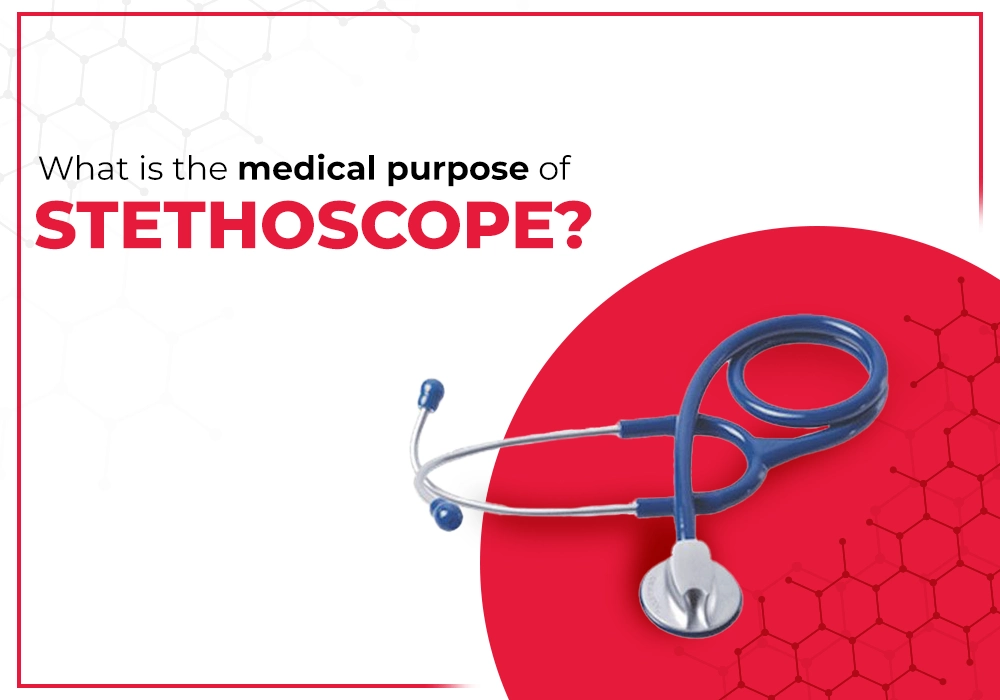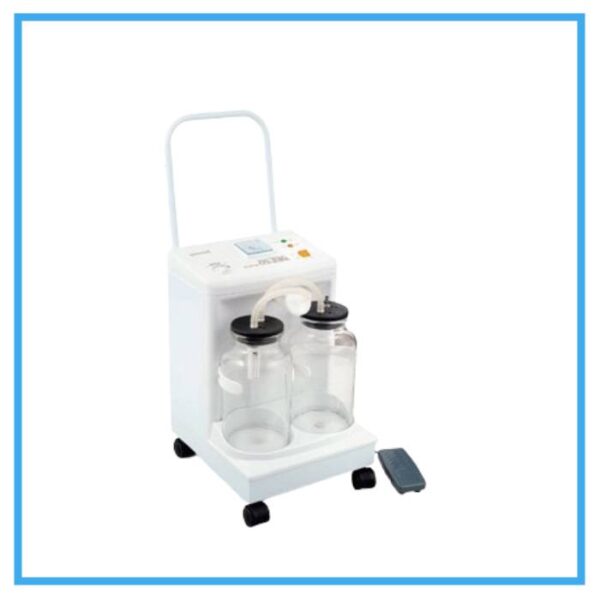The stethoscope is like the iconic tool in the hospitals. It’s with every doctor,nurse and healthcare provider to diagnose and monitor their patients. It’s the symbol of the medical world and is pretty useful to be with us for a pretty long time. But what exactly is the stethoscope? What’s its purpose? Why do we need it so often that it became the symbol of the medical world? In this blog we’ll study where and how it came to be as well as its uses and other things related to it.
The stethoscope: A brief history
In 1816 a man named René Laennec who was a french physician got frustrated that he couldn’t hear his patients heart beat and check the patient in a better way made a wooden tub to listen to the sound of his patients chests. This later on turned into the modern day stethoscope.
Today the stethoscope is a vital tool for checking the heart rate of the patients as well as blood pressure. It can help discover the health of the patient in just a simple way.
The medical purpose of stethoscope
The medical purpose of the stethoscope is to listen to the sound of the body of any patient known as auscultation. The stethoscope can make use differ a the sounds and diagnose the patient really well here are some of its features:
1. Heart rate monitoring
One of the most common uses of the stethoscope is that it is used to listen to the heart sounds, comparing these sounds with the healthy heart. The doctor’s stethoscope is used to detect any faint difference. If the heart sound is different from the healthy heart then there must be a problem. Cardiologists are professionally trained to use the medical stethoscope to detect the faintest changes in the human heart. It’s used by placing the chest piece on the chest and listening through the ear buds for any irregularities.
2. Blood pressure checking
It’s also used in detecting blood pressure changes in the human body for any high or low blood pressure. If used in sync with the sphygmomanometer the health care provider will listen to the korotkoff sounds (the sound of the blood flowing through the arteries. To detect the blood pressures accurate reading.
3. Lung and respiratory assessment
A stethoscope is an essential need for even detecting lung and respiratory diseases.The doctors use it to listen to the breathing sounds in the lungs to detect pneumonia,asthma or CPOD in lungs. The stethoscope can help listen to the slight wheezing if the patient has any to help diagnose the disease better
4. Abdominal sounds
The stethoscope can also help assist us the gastrointestinal health of the patient. The healthcare providers or doctors can listen to the bowel sounds to identify any blockages and reduced motility. This is mostly used in emergency medicines and postal surgeries
5. Vascular assessment
In a lot of cases the stethoscope is used to listen to the blood flow of the body. It listens to the femoral arteries and carotid.it can detect conditions like arterial stenosis or aneurysms.
Types of stethoscope:
Over the years the stethoscope has revolutionized to fit the needs of everyone and make the medical process easier. The most common stethoscopes are:
1. Medical stethoscope
The Medical stethoscope is made of metal and plastic. Like a coin, the chest piece typically has two sides: a diaphragm and a bell. Your provider can flip back and forth between them to hear different types of sounds. The diaphragm is a flat circle, and the bell is a hollow cup.
2. Digital stethoscope
The digital stethoscope uses the condenser microphone, preamplifier circuit, and filter circuit. The optimum filter is Butterworth with a fourth-order Sallen key low pass filter topology with a gain of 0.707 volts, -3.01 dB, and a fourth-order high pass filter with a gain of 0.782 volts, -2.137 dB. It’s used to represent the newer generation.
3. Cardiology stethoscope
Designed specifically for cardiologists, the cardiology stethoscope has a similar structure to the normal stethoscope but is a bit diverse when used to listen to the sound of the heart. It is specifically made for cardiologists
4. Pediatric stethoscope
Smaller and lighter than an average stethoscope, pediatric stethoscopes are made specifically for children. They provide accurate auscultation for younger patients, ensuring proper diagnosis and care. Due to the lower sound frequency.
5. Fetal stethoscope
Also called a Pinard horn, the fetal stethoscope is used to listen to the baby’s heartbeat during the developmental stages of pregnancy. While electronic fetal monitors are more commonly used today, traditional fetal stethoscopes are still used in some cases.
Why does the stethoscope remain vital today even due to the advancement?
Even due to the advancement the stethoscope remains vital due to many reasons the reasons are as stated:
1.Portability and accessibility
Unlike many machines which are huge and aren’t accessible outside of the hospital.The stethoscope is pretty portable you can carry it on you and it is also accessible to anyone.
2.Cost Effectiveness
Stethoscopes are pretty affordable and can be found in many places in someone’s house too. This makes them accessible to any country or person.
3. Immediate results
A stethoscope gives Immediate results without any errors. It provides effective results to the doctor or healthcare provider within a few minutes.
4. Non-invasive nature
Auscultation with a stethoscope is a non-invasive procedure, making it a comfortable option for patients.
The future of stethoscope
The stethoscope is evolving with time and in a good way. Now even more digital stethoscopes are made which are pretty effective and self-sufficient. It makes life easier and with time it would eventually evolve into a greater tool.
We expect it to become even more effective with detecting noises in the body in the near future.
Conclusion
The stethoscope is a pretty useful tool for the doctor. It’s the symbol of the medical profession and plays a vital role in detecting diseases without errors.It is pretty much used by every health care provider and even a normal person if they know how to use it.
Whether you’re a doctor using a Cardiology stethoscope or a nurse relying on a dual head stethoscope, this tool remains a trusted friend in the journey towards better health. As technology continues to advance, the stethoscope will also adapt, ensuring its place in healthcare for generations to come ahead of us.






